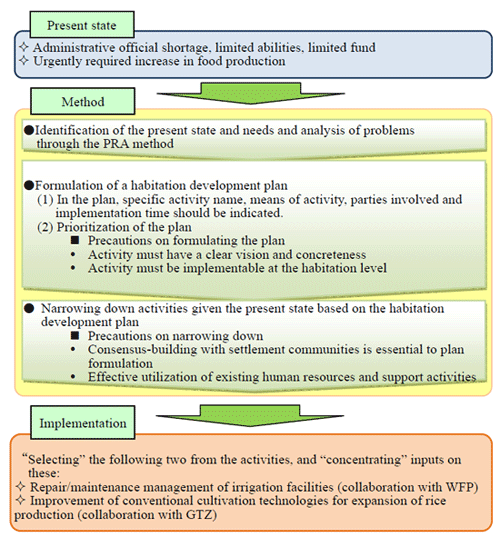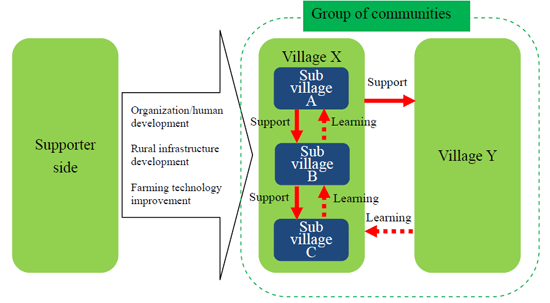Guideline for Rural Reconstruction in East Timor
Description
East Timor became independent in May 2002, and has been working on nation- building with support from the international community which includes international organizations, governments of other countries and NGOs. However, its economic and societal conditions still remain stagnant, and one indication was a domestic conflict which occurred in 2006. In particular, administrative functions have been downgraded due to the outflow of human resources resulting from the conflict, and the number of officials at the Ministry of Agriculture, Forestry and Fisheries has been decreased to approximately 300, accounting for one tenth of the number before independence. Thus, it has been difficult to provide favorable administrative services. In the meantime, over 70% of the population live in rural areas and engage in agriculture, which is the main industry of the country. However, the productivity is low, and the country depends on imports for staple food such as rice. Therefore, it is urgently required for the country to secure food, increase agricultural productivity and work on sustainable agricultural development through human resource cultivation, etc. In the country, it is hoped that prompt preparation of training materials, etc. for the improvement of the abilities of agricultural promoters, who were first appointed in large numbers in 2008 with the aim of establishing a system of one promoter per village (309 promoters by 2010, to be increased by approximately 190 in the future) will be made.
In this research, rural reconstruction guidelines (in English and local language Tetung) have been formulated so that a method for effectively utilizing farmers and the human resources of local administrative organizations, and so that administrative officials can use this method, in order to solve the problems of East Timor. In formulating the guideline, workshops were held with senior agricultural promoters across the nation to check the contents and to gather the opinions of all bureau chiefs of the Ministry of Agriculture and Fishery. The guideline reflects these opinions, and is approved as a training textbook for agricultural promoters of the country.
The characteristics of this guideline in comparison to ordinary, participatory agricultural and rural development methods are as follows. 1) To provide more prompt support amid the significant shortage of human resources, it is necessary to select and concentrate activities. This guideline introduces examples of efforts with focused activities, and present methods that allow the selection and concentration processes to lead to vitalization of habitation communities (Fig. 1). 2) As a factor for success of recovery support, it is important to produce a clear achievement fast. This guideline introduces an example of support activities conducted in collaboration with WFP and GTZ, and present a method for promptly creating an achievement by efficiently utilizing funds and human resources of various organizations. 3) Given the present state of administrative official shortage, this guideline introduces a method for adopting an agricultural promotion mechanism based on collaboration between communities without excessively relying on the administration and allowing the promotion among habitation communities by farmers to function (Fig. 2).
Figure, table
-
Fig. 1. Selection and concentration processes. -
Fig. 2. Procedure of the promotion mechanism based on inter-community collaboration between farmers and settlement communities.
- Affiliation
-
Japan International Research Center for Agricultural Sciences Rural Development Planning Division
- Classification
-
Administration A
- Term of research
-
FY2006~2010
- Responsible researcher
-
HIGASHIMAKI Takeru ( Rural Development Planning Division )
WATANABE Mamoru ( Rural Development Planning Division )
DAN Haruyuki ( Rural Development Planning Division )
OMORI Keisuke ( Rural Development Planning Division )
IWASAKI Kaoru ( Rural Development Planning Division )
- ほか
- Publication, etc.
-
10-Chapter of the Guideline on How to Support the Revitalizing of Rural Communities
- Japanese PDF


